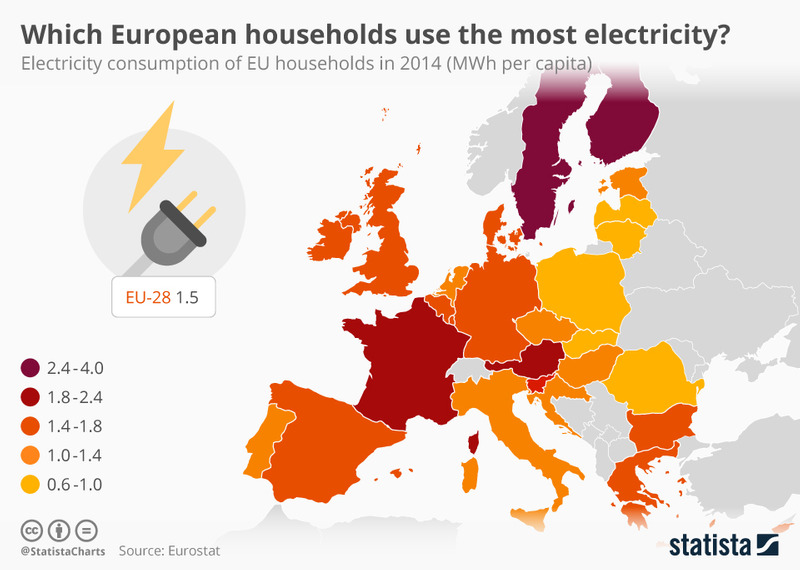About 55% of the energy consumed in buildings in Portugal comes from electricity, a value significantly higher than the European average of 32%. A considerable part of this consumption is related to the use of air conditioning systems.
According to data from the DGEG (General Directorate of Energy and Geology), it would be possible to reduce the energy consumption of the building sector by half, which would represent 400,000 tons less CO₂ emissions per year.
Energy efficiency of buildings in Portugal
Between 2014 and 2019, most of the residential buildings certified in Portugal received a D energy rating. Only 25.7% achieved a rating between A+ and B-.
For comparison purposes, France has a similar situation. Most residential buildings — including apartments, houses, and collective housing — have a D energy rating. Only 21.9% are rated in classes A and B.
Electricity consumption in Portugal
In 2017, the average electricity consumption per inhabitant in Portugal was approximately 3.3 kWh per day (source: INE). In that same year, each Portuguese spent an average of 56.80 euros per month on electricity (source: ADENE survey 2017).

Which European countries had households that consumed the most electricity in 2014?
For comparison, the 2014 data concerning other European countries is as follows:
- Finland: 10.7 kWh per day per inhabitant
- Sweden: 10.4 kWh per day per inhabitant
- France: 6.3 kWh per day per inhabitant
- Portugal: 3.13 kWh per day per inhabitant
- Romania: 1.6 kWh per day per inhabitant
An opportunity for the development of sustainable construction in Portugal
The data on the energy performance of buildings highlights the potential for optimizing the real estate sector in Portugal.
These improvements can positively influence the quality of life in homes, apartments, or offices. More than that, they also have a significant financial impact, as energy optimization allows for a substantial reduction in energy consumption—whether electrical or from other sources.
